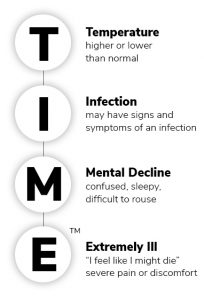Going to the Emergency Room During a Pandemic
April 28, 2020
The emergency room is not a place where people plan on spending time. But when a medical emergency occurs, there really is no option, even during a pandemic. The COVID-19 pandemic has taken over our lives. Whether we are part of the essential worker group going out to work every day, or we stay home as officials ask, people are still falling or cutting themselves, and they’re still having heart attacks and strokes – or sepsis. But officials are across the country are reporting quieter than ever emergency departments, aside from COVID-19 cases. This causes concern because it means that people aren’t seeking help when they should. They are afraid of that if they do go to the ER, they will catch the coronavirus.
Is it an emergency?
A medical emergency is an acute situation that puts your life or long-term health in danger. Some are obvious, but sometimes we wonder if what we are experiencing is really an emergency or if we can wait it out. “One of the unintended consequences has been the delay in presenting for heart attacks and strokes during COVID,” said emergency room physician and Sepsis Alliance board member Karin Molander, MD. “Don’t delay with lacerations, broken bones, chest pain, paralysis, or the worst headache of your life.” Here are some other examples of emergencies, requiring either a call to 9-1-1 or going straight to the ER yourself:
- Bleeding that won’t stop
- Difficulty breathing
- Choking
- Loss of consciousness
- Head or spinal injuries
- Severe or persistent vomiting
- Feelings of hopelessness that could result in suicide or harming others
- Serious burns
- Ingesting a poisonous substance
- Severe abdominal pain
If you suspect sepsis, this is also a medical emergency:

If you’re not sure it’s an emergency
If you believe the situation is serious but you’re still not sure, there are options. Dr. Molander suggests contacting your local advice line or telehealth line, for example. You can also check with your doctor’s office if the staff is providing video conferencing for appointments, if you can’t or don’t want to go to the office or clinic.
One person only allowed in the ER
There’s another problem that affects people who go to ERs, whether on their own or by ambulance. Most ERs are restricting who is allowed in. Except for pediatrics, which allows one parent or guardian to accompany a sick or injured child, ERs do not allow anyone but the patient to enter the facility – even if you are the caregiver. “This is to protect you from potential infection and vice versa,” Dr. Molander explained.
Helping your loved one in the ER
As a caregiver, it can be frightening to hand over your sick loved one to the ER nurses and doctors and not be allowed to go in with them. You are their voice and their advocate, and you want to be with them. But there are steps you can take that can help your loved one, the staff, and you. “Leave your name and phone number with the ED staff, and let them know if you have video capabilities, like FaceTime,” Dr. Molander advised. Provide the staff with as much information as you can about your loved one. The ER staff need information such as:
- The problem that resulted in the ER visit
- Doctor contacts
- Medical history
- List of medications
- Allergies
- How to communicate and any issues that may interfere with communication
- Insurance information
Because you won’t be with your loved one, it’s important that they not keep anything valuable with them.
Emergencies are stressful at the best of times, and even more so during this uncertain period. But don’t let the fear of COVID-19 prevent you from seeking medical help if you or a loved one needs it. The doctors, nurses, and all the medical staff are there, ready to do their job for anyone who needs it.





























